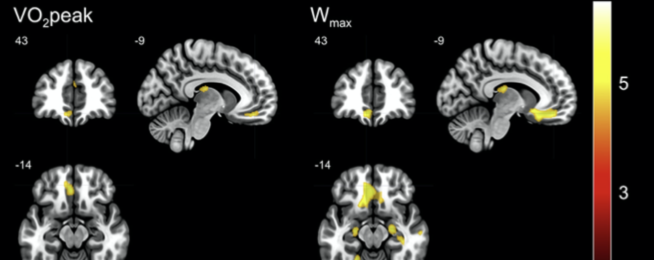It is well known that exercise results in cardio respiratory fitness, but now we know that it is not just your muscles and heart that get bigger and stronger, it’s your brain too.
Recent research from Germany shows that aerobic exercise increases local and overall gray matter volume in the brain by an average 5.3 cubic centimetres.
This is a significant increase and more than the total brain volume of some American Presidents.
The increase in brain health may decelerate the decline in gray matter that is associated with cognitive disease in older age.
The study was undertaken at German Center for Neurodegenerative Diseases and published in Mayo Clinical Proceedings.
The study involved 2,013 adults from two independent cohorts in northeastern Germany. Participants were examined in phases from 1997 through 2012.
Cardiorespiratory fitness was measured using peak oxygen uptake and other standards while participants used an exercise bike. MRI brain data also were analyzed.
The researchers found that increases in peak oxygen uptake were strongly associated with increased gray matter volume.
An editorial by three Mayo Clinic experts that accompanies the Mayo Clinic Proceedings study says the results are "encouraging, intriguing and contribute to the growing literature relating to exercise and brain health."
Ronald Petersen, M.D., Ph.D., a Mayo Clinic neurologist and first author of the editorial, says the most striking feature of the study is the measured effect of exercise on brain structures involved in cognition, rather than motor function.
"This provides indirect evidence that aerobic exercise can have a positive impact on cognitive function in addition to physical conditioning," he says.
"Another important feature of the study is that these results may apply to older adults, as well. There is good evidence for the value of exercise in midlife, but it is encouraging that there can be positive effects on the brain in later life as well."
"This is another piece of the puzzle showing physical activity and physical fitness is protective against aging-related cognitive decline," says Michael Joyner, M.D., a Mayo Clinic anesthesiologist and physiologist, and editorial co-author.
"There's already good epidemiological evidence for this, as well as emerging data showing that physical activity and fitness are associated with improved brain blood vessel function. This paper is important because of the volumetric data showing an effect on brain structure."
Interestingly this paper follows one last year that found that white matter also benefited from exercise.
Read Bicycle Network's report: Exercise matters to white
Become our friend
Find out more about Bicycle Network and support us in making it easier for people to ride bikes.


